PAKISTAN
Islamabad

Islamabad
Islamabad
Islamabad (meaning House of Islam in Urdu) is the capital of Pakistan. According to the 2009 census, the city has a population of 1.21 million. The metropolitan area of Islamabad is the third largest in Pakistan with a population of over 4.5 million.
The city was built during the 1960s to replace Karachi as the capital of Pakistan. Islamabad is the most developed city in Pakistan. The city is well organised and divided into different sectors and zones.
It has the largest mosque in South Asia with the Faisal Mosque and the sixth largest mosque in the world.
Islamabad has a number of top universities: the Quaid-i-Azam University, the Pakistan Institute of Engineering & Applied Sciences and the National University of Science and Technology. The city has the highest literacy rate in Pakistan.
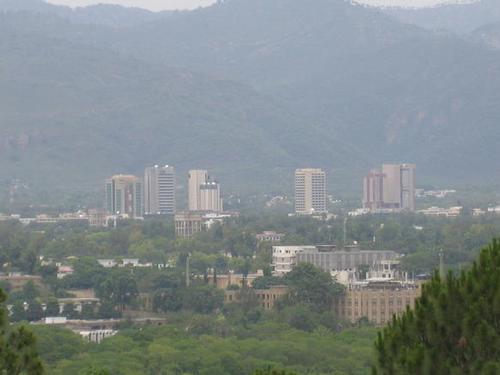 IslamabadPhoto: Raz CC 1.0 Generic no changes made
IslamabadPhoto: Raz CC 1.0 Generic no changes made
| advertisement |
| Hotels Islamabad |
Location
The coordinates of Islamabad are: 33° 43' North Latitude and 73° 04' East Longitude.
Islamabad lies on the edge of the Pothohar Plateau in the north of the country at the foot of the Margalla Hills at an altitude of 507 metres. The modern capital and the ancient Gakhar city of Rawalpindi to the southwest lie side by side and are commonly referred to as the twin cities. Islamabad lies 120 kilometres southwest of Muzaffarabad, 185 kilometres east of Peshawar, 295 kilometres northeast of Lahore and 300 kilometres west of Srinagar, the capital of Indian Kashmir.
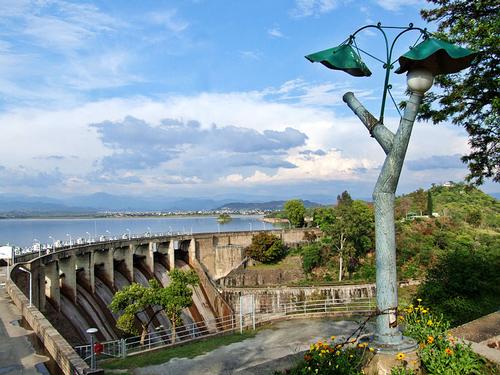 Rawal dam near IslamabadPhoto: Amjad Sheikh CC 3.0 Unported no changes made
Rawal dam near IslamabadPhoto: Amjad Sheikh CC 3.0 Unported no changes made
The urban area consists of 233 square kilometres. A plain stretches out in the south. The Kurang River flows through the plain; the Rawal Dam is located in this river. Islamabad's microclimate is regulated by artificial reservoirs, fed by various dams and lakes.
Weather
Islamabad has a humid subtropical climate, with characteristic hot, humid summers, a monsoon season and cool winters. The hottest months are from May to July, when average daily temperatures exceed 38° C. The rainy season is from July to September, with heavy rainfall and frequent thunderstorms. The average annual rainfall is 1,142 mm. Winters last from October to March with temperatures varying from location to location. In general, there is dense fog in the morning and sunshine in the afternoon. Snowfall is seen on the peaks of Margalla hills. The weather varies extremely from -3.6° C in January to close to 40° C in June.
History
The first signs of human habitation in Asia have been found near Islamabad on the Pothohar Plateau. Some of the earliest Stone Age artefacts in the world have been found on this plateau. Stones used for hunting have come from the terraces of the River Soan and testify that human race lived in this location during the Ice Age. Pieces of pottery and utensils dating back to prehistoric times have been found in this place.
Excavations have shown the existence of a prehistoric culture. Some remains and human skulls date back to 5000 BC and show that this region was home to Neolithic people. The Neolithic people lived here in small communities around 3000 BC. The area was situated on the valley of the Indus. This civilisation flourished between the 23rd and 18th centuries BC. Various conquerors including Alexander the Great, Genghis Khan, Timur Lenk and Ahmad Shah Durrani visited Islamabad on their way to invade the Indian subcontinent.
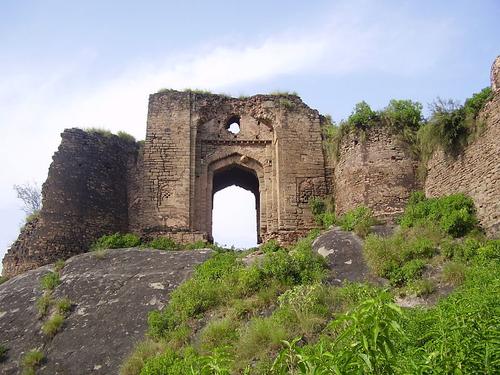 Pharwala Fortress IsamabadPhoto: Khalid Mahmood CC 3.0 Unported no changes made
Pharwala Fortress IsamabadPhoto: Khalid Mahmood CC 3.0 Unported no changes made
When Pakistan gained independence in 1947, Karachi was its first capital. It was a former colonial capital, located in a part of the country that was exposed to attacks from the Arabian Sea. In 1960, Islamabad was built as a new capital. Traditionally, Pakistan's development had been focused on the colonial centre of Karachi, but President Ayub Khan wanted staggered developments spread over both cities. From then on, Islamabad started attracting people from all over Pakistan, making it the most cosmopolitan city in the country. A strong earthquake struck Kashmir in October 2005, resulting in damage in Islamabad. The city has also experienced a series of terror attacks.
Sights
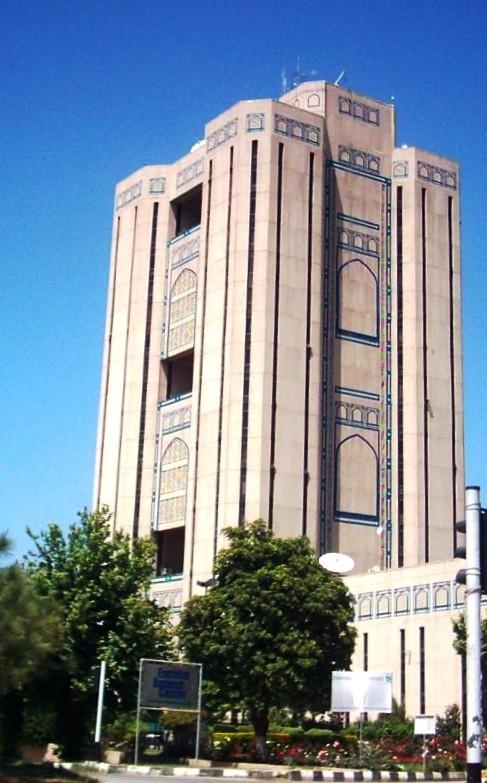 Islamabad Saudi-Pak towerPhoto: Umair ua at eng Wikipedia in the public domain
Islamabad Saudi-Pak towerPhoto: Umair ua at eng Wikipedia in the public domain
The city's attraction is a combination of modern and ancient Islamic architecture. The Saudi Pak Tower is an example of the integration of modern architecture with traditional styles. This beige building is the tallest building in Islamabad and is trimmed with blue tiles according to Islamic tradition. Other examples of interwoven Islamic and modern architecture include the Pakistan Monument and the Faisal Mosque.
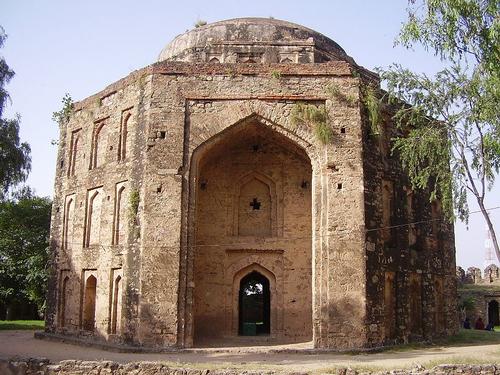 Rawat Fort IslamabadPhoto: Khalid Mahmood in the public domain
Rawat Fort IslamabadPhoto: Khalid Mahmood in the public domain
Because of its location on the Pothohar Plateau, remnants of ancient cultures and civilisations, such as those of the Indus Valley civilisation, can still be found in the region. A 15th-century Gakhar fort is located near Islamabad and was built on the remains of a 10th-century Hindu fort. The 16th-century tomb of Sultan Sarang Khan lies in the Rawat Fort near Islamabad. Archaeological remains of the Buddhist era can still be found in the region.
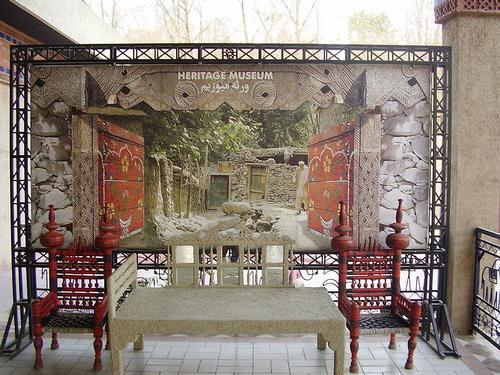 Lok Virsa Museum IslamabadPhoto: Khalid Mahmood CC 3.0 Unported no chaanges made
Lok Virsa Museum IslamabadPhoto: Khalid Mahmood CC 3.0 Unported no chaanges made
The Lok Virsa Museum in Islamabad showcases the traditional culture of Pakistan. The Ethnographic Museum, near the Shakarparian Hills displays a large number of embroidered costumes, jewellery, woodwork, artifacts in ivory and bones, as well as many valuable objects from the region and other parts of Pakistan.
Two Software Technology Parks have promoted the development of information and communication technologies and attracted numerous national and international IT companies.
Tips
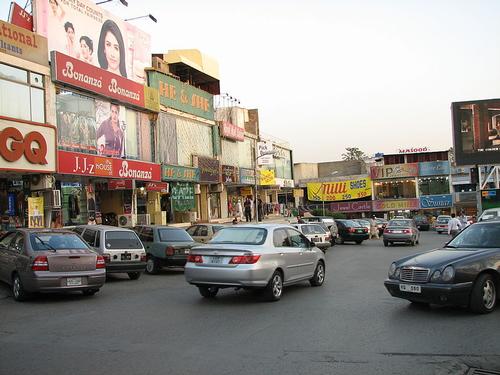 Jinnah Market in IslamabadPhoto: Executioner CC 3.0 Unported no changes made
Jinnah Market in IslamabadPhoto: Executioner CC 3.0 Unported no changes made
Islamabad has a number of attractive markets. The Aabpaara market is located in the city centre and is the oldest and most extensive market in the city. It offers a wide variety of shopping opportunities. You will find everything from shops selling dried fruit to antique toys. The Jinnah market is located in the centre of sector F-7 and is the most famous shopping area when it comes to shoes. The prices are very affordable. Also known for its prices and affordability is the Melody market. You will find the famous clothing and accessory shops, trendy shops and lots of food. The market attracts people from all walks of life.
Useful links Islamabad
BBC Country ProfilesWorld Fact Book Explore all Countries
How to call
Last updated June 2025
Copyright: Team - The World of Info